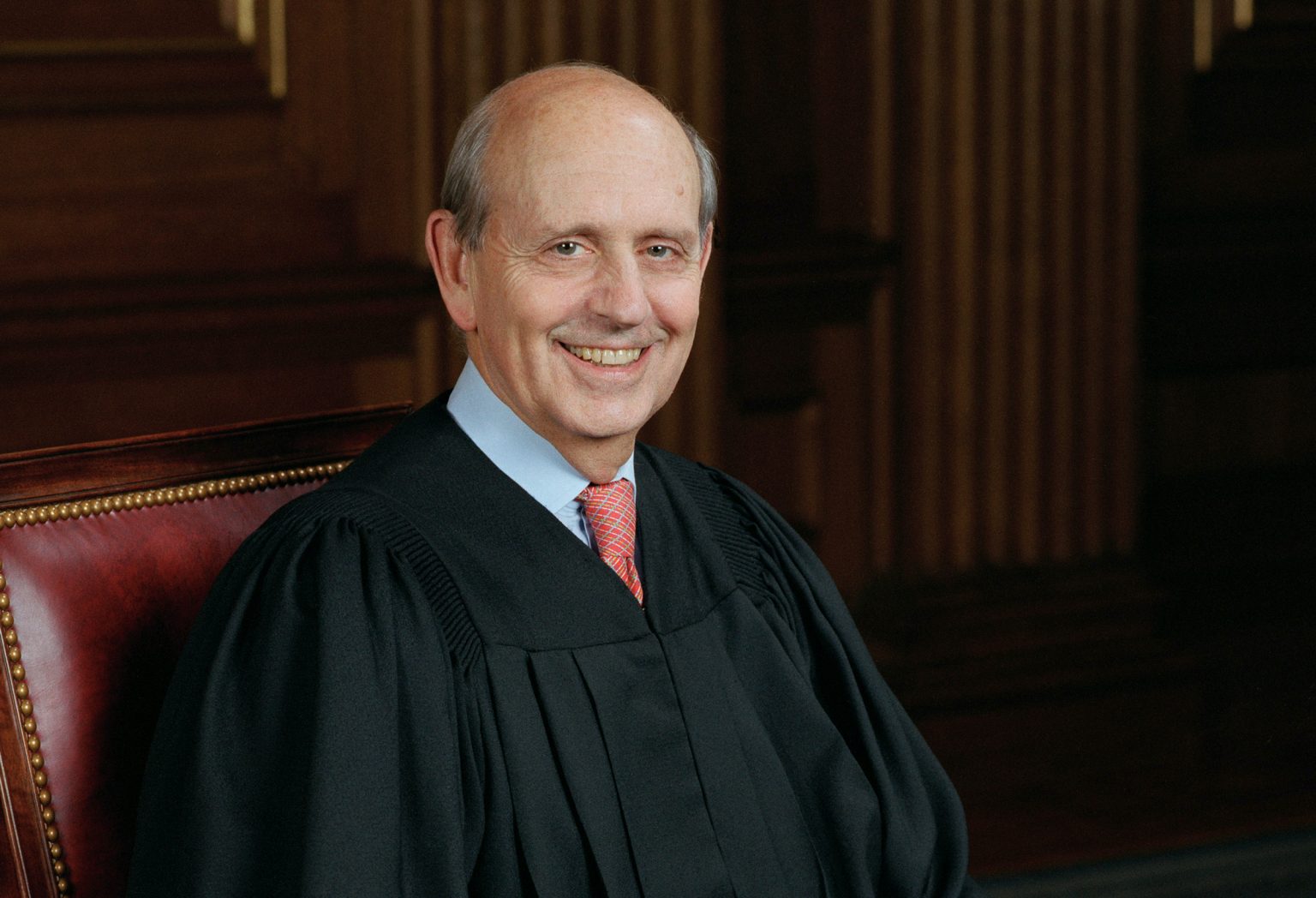The most senior member of the United States Supreme Court’s left wing bloc plans to step down at the end of the Court’s current term, allowing President Joe Biden to nominate a successor during the current United States Congress, in which Democrats have a bare, fifty vote Senate majority and no filibuster standing in the way of a confirmation vote, several big media outlets are reporting.
Breyer, eighty-three, is one of two justices nominated by President Bill Clinton to serve on the Supreme Court. He was confirmed on July 29th, 1994 by a vote of eighty-seven to nine, and began his tenure on August 3rd, 1994.
Breyer replaced retiring Justice Harry Blackmun, who joined the Court during the Nixon presidency and served for over three decades.
Prior to his elevation to the Supreme Court, Breyer was the Chief Judge of the United States Court of Appeals for the First Circuit.
Following Breyer’s confirmation, many years elapsed in which there was no Supreme Court vacancy. It was not until 2005, when Chief Justice William Rehnquist died, that a new justice joined the Court (John Roberts). The following year, Roberts was joined by Samuel Alito, who replaced retiring Justice Sandra Day O’Connor. Both Alito and Roberts were nominated by George W. Bush.
After Barack Obama’s election, two more justices stepped down, this time from the Court’s liberal wing: David Souter and John Paul Stevens. They chose to retire at a time when the presidency and Senate were controlled by Democrats, ensuring that their successors would not tilt the Court further to the right.
Justices Ruth Bader Ginsburg and Stephen Breyer, however, opted not to retire during that period, and remained on the Court. Ginsburg died just weeks before the Democratic victory in the 2020 presidential election, allowing Donald Trump and Mitch McConnell to install Amy Coney Barrett on the Court in her stead.
Ginsburg made it clear she did not want a successor nominated and confirmed prior to the election, but Republicans ignored her wishes. They were in a position to do so and they did. Breyer is making sure Republicans won’t get the opportunity to do that with the seat he currently holds.
Breyer has been under pressure to retire before the 2022 midterms from progressive activists and Democratic leaders. Though Breyer opted not to retire last year, he made it clear in interviews that he was open to retiring before the midterms, saying that many factors would drive his decision.
Breyer also said he agreed with former Justice Rehnquist that “deciding when to step down from the Court is not a judicial act” and that it was not inappropriate for a justice to take into account the party or politics of the sitting president.
“There are a lot of blurred things there, and there are many considerations,” he told The New York Times. “They form a whole. I’ll make a decision.”
It appears Justice Breyer has now made his decision: he will exit the Court once this term ends, allowing for an orderly nomination and confirmation process to play out in the meantime. President Joe Biden has pledged to nominate a Black woman to succeed Breyer, and the White House has consistently reiterated that Biden intends to honor that campaign promise. Biden’s nominee would be the first Black woman on the Court in its entire two hundred plus year history.
The White House is planning an event on Thursday to discuss filling the Court vacancy, according to correspondents who cover the executive branch.
Meanwhile, Senate Democrats have started making their own plans.
“(Senate Majority Leader Schumer is looking at a quick timeframe to confirm Biden’s nominee to the court — and he will follow a similar timeline that Republicans employed to confirm Amy Coney Barrett to the court in 2020, per a source familiar with this thinking,” CNN’s Manu Raju reported.
“Senate sources also say that the Senate can act on the Biden nominee before Justice Stephen Breyer officially steps down from the court,” Raju added. “So Democrats expect to hold hearings and votes before Breyer officially steps aside at the end of his term.”
“Once the pick is made, Schumer is looking at a timeframe that could get the Biden pick confirmed in about a month or so, per source.”
Some names being discussed that could end up on Biden’s shortlist are:
- D.C. Circuit Judge Ketanji Brown Jackson
- California Supreme Court Justice Leondra Kruger
- District Judge J. Michelle Childs
- District Judge Wilhelmina “Mimi” Wright
- Circuit Judge Eunice Lee
- Circuit Judge Candace Jackson-Akiwumi
- Civil rights attorney Sherrilyn Ifill
Brown Jackson’s name tops most of the lists we’ve seen, but of course, President Biden has other options. Once the new justice is seated, no member of the Court’s liberal bloc is expected to be older than seventy.
The oldest justices in the right wing bloc are Clarence Thomas (seventy-three) and Samuel Alito (seventy-one). The other members of the right wing bloc (Roberts, Kavanaugh, Gorsuch, Coney Barrett) are much younger. Coney Barrett is forty-nine; Roberts, Kavanaugh, and Gorsuch are in their fifties or sixties.
Expansion of the Supreme Court is likely the only way to address its current, dangerous right wing ideological dominance in the near future, as abolishing lifetime tenures would take a constitutional amendment and there are unlikely to be any further Supreme Court retirements in the next few years.
When Justice Breyer makes a formal statement, we’ll post that here.

